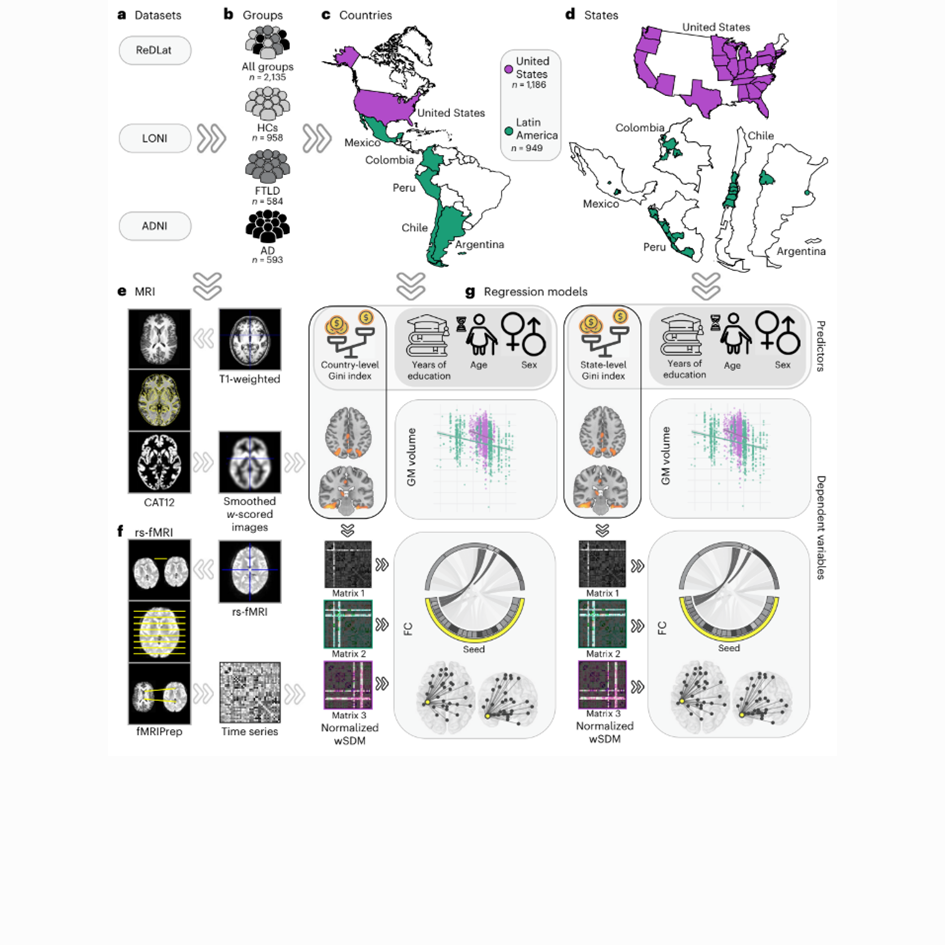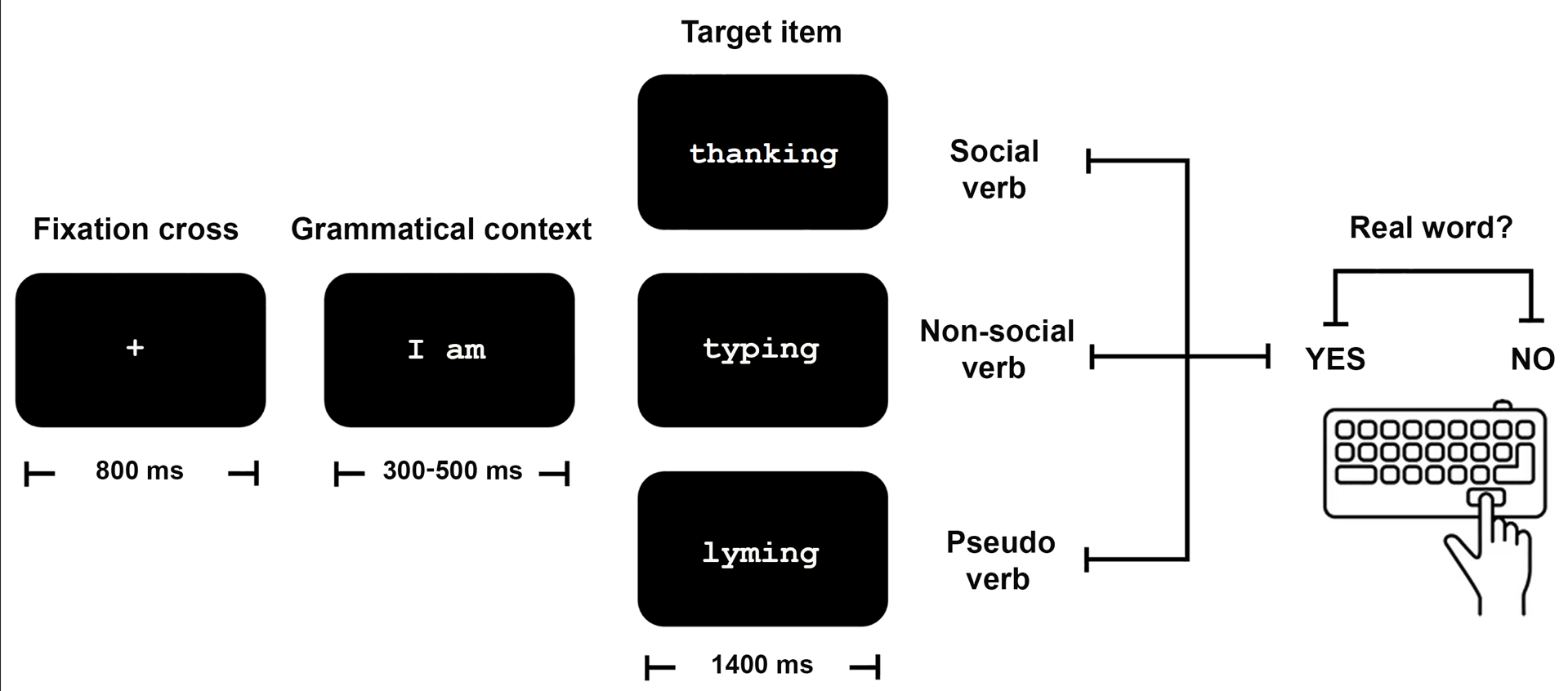Structural inequality linked to brain volume and network dynamics in aging and dementia across the Americas
Legaz, A., Altschuler, F., González-Gómez, R. […] García, A. M. […] & Ibáñez, A. (2024). Structural inequality linked to brain volume and network dynamics in aging and dementias across the Americas. Nature Aging.
La desigualdad estructural, la distribución desigual de recursos y oportunidades, influye en la salud. Sin embargo, no está clara la implicación biológica de la desigualdad estructural en el envejecimiento y la demencia, especialmente entre las poblaciones infrarrepresentadas. Examinamos la asociación entre la desigualdad estructural (índices de Gini a nivel nacional y estatal) y el volumen y la conectividad cerebrales en 2.135 controles sanos e individuos con enfermedad de Alzheimer y degeneración del lóbulo frontotemporal de América Latina y Estados Unidos. Una mayor desigualdad estructural se relacionó con una reducción del volumen y la conectividad cerebrales, con efectos más fuertes en América Latina, especialmente en las regiones temporo-cerebelosa, fronto-talámica e hipocampal. En Estados Unidos, se observaron efectos más leves en las áreas insular-cingular y temporal. Los resultados fueron más pronunciados en la enfermedad de Alzheimer e independientes de la edad, el sexo, la educación, la cognición y otros factores de confusión. Los resultados ponen de relieve el papel crítico de la desigualdad estructural en el envejecimiento y la demencia, haciendo hincapié en la incrustación biológica de los factores macrosociales y la necesidad de intervenciones específicas en las poblaciones desatendidas.
Para acceder al artículo, hacé click aquí.
Structural inequality linked to brain volume and network dynamics in aging and dementia across the Americas
Legaz, A., Altschuler, F., González-Gómez, R. […] García, A. M. […] & Ibáñez, A. (2024). Structural inequality linked to brain volume and network dynamics in aging and dementias across the Americas. Nature Aging.
Structural inequality, the uneven distribution of resources and opportunities, influences health outcomes. However, the biological embedding of structural inequality in aging and dementia, especially among underrepresented populations, is unclear. We examined the association between structural inequality (country-level and state-level Gini indices) and brain volume and connectivity in 2,135 healthy controls, and individuals with Alzheimer’s disease and frontotemporal lobe degeneration from Latin America and the United States. Greater structural inequality was linked to reduced brain volume and connectivity, with stronger effects in Latin America, especially in the temporo-cerebellar, fronto-thalamic and hippocampal regions. In the United States, milder effects were observed in the insular-cingular and temporal areas. Results were more pronounced in Alzheimer’s disease and were independent of age, sex, education, cognition and other confounding factors. The findings highlight the critical role of structural inequality in aging and dementia, emphasizing the biological embedding of macrosocial factors and the need for targeted interventions in underserved populations.
To access the full paper, please click here.



